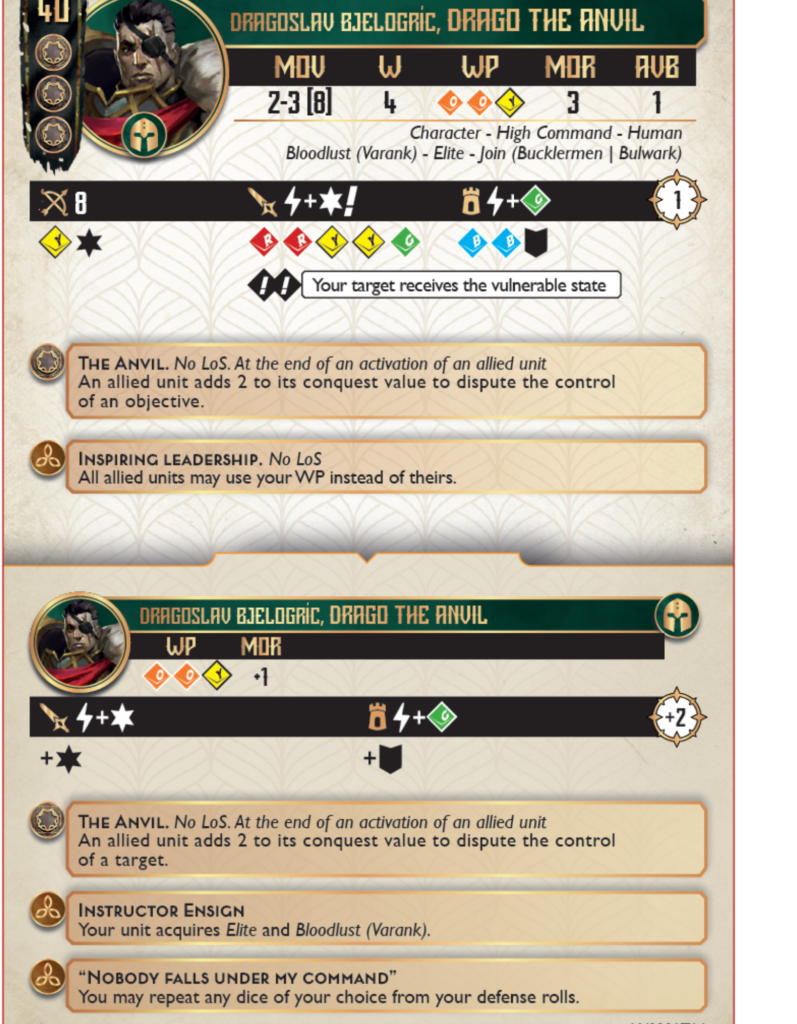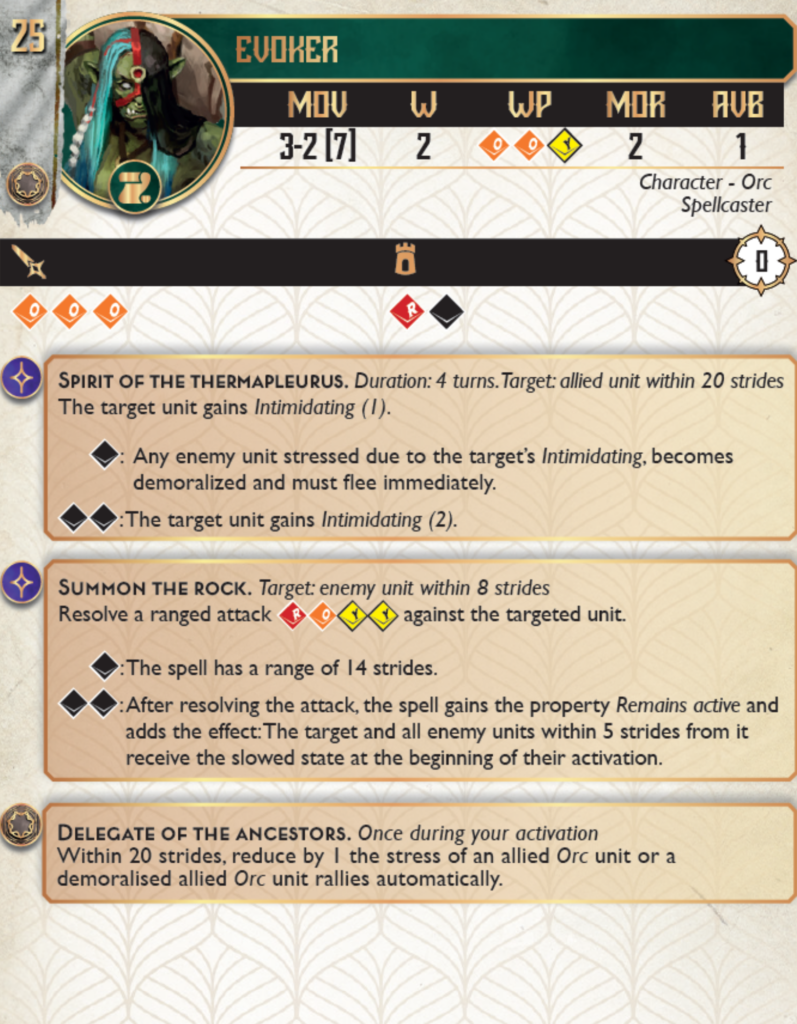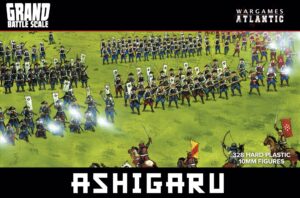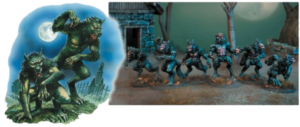At the 4th blog of Warcrow already! Whow, things are going well, and the hype is starting to go over 9000! If you want to know what we are talking about, be sure to check out the previous blogs here!
Do also note, that at the time of this blog, the official rules haven’t been released yet, so that means that we have to rely on the video’s on YouTube and Corvus Belli’s own video series on the game. If I am wrong somewhere in this blog, blame CB, not me 🙂
What do we know about Warcrow from a game perspective
- Warcrow is a narrative based system, with mechanics tied into the mission like thematic elements for missions, like environment conditions and RPG elements. This impacts how a follow-up game will commence.
- Warcrow is fast playing. Features like the inclusion of character cards with unit stats and special rules written on them, makes a slicker game. There are also some quality of life elements, like only having to measure unit leaders movement. You place the unit around the leader when moving.
- Just as cinematic and bloody as the Sci-fi counterpart Infinity, but less complex. This should appeal to a lot more people that like less “interesting” games, but more gameplay.
The basics of Warcrow
Warcrow is a two-player game, played on a 3×3 (91 x 91 cm). There is not a lot of terrain, but enough to block line of sight.
Typically, a game will have about 20 to 25 miniatures per side. In the Battle box you will receive 14 miniatures, 7 per side.
Based on the unit cards, this counts to about 100 points per side. With characters being more expensive, it would suggest that you need about 3 times more to hit the 20 mini count in size. This of course, assuming you need more normal units than characters. 200 points seems the sweet spot for a regular game of Warcrow.
Each game is split into a number of rounds. Each round will have a number of turns. Rounds are tracked on a round tracker. Each turn, a player can take two turns, activating one unit per turn in a “I go, you go” game style.
It can be expected (wild thoughts) that a game with more points give more activations per turn to speed the game up a bit. This does mean that you don’t get to activate all of your units in one round. At the end of each round, you will get to complete a “No-one gets left behind” move. Every unit that didn’t activate, will activate then, so they don’t get left behind. We also found units that trigger special abilities in this part of the round, nice!
Unit profiles and dice.
Note that final versions of these profiles might differ from the info I got and found. In the next blog we get to look at the mechanics. First we are going to look at the dice, to understand the profiles a bit more.

The top three dice are attack dice, the lower three are defense dice. There are ones with hollow and closed stars and exclamation marks, which are used to roll combinations, special abilities, attack and block actions. You can even counterattack with the black dice!
The Profiles

This is the profile for the Black Legion Bucklermen from the Winds of the North Battle Box
Top left we have the unit cost (20). Could be for one or the full unit, still uncertain.
- Mov, which is movement and has 3 values. In Warcrow you use Strides to work out the distance. A single stride is 15 mm long. The Bucklermen can move 3 + 3 Strides in a single action OR charge 9 strides. More about this in our next video, but yes, each movement skill would be 3 + 3 strides. Not 3 in the first and 3 in the second, but really 3 + 3.
- W is for Wounds. In this case the unit has 2 wounds. Every 2 wounds, there is another citizen added to the pile of past relatives.
- WP, or Willpower is a dice that you use for morale checks. I assume this would also be used for magic at some point, but more in a bit.
- Mor is Morale. This is to check how long it takes before the unit breaks and runs away. In this case, they need MORE than one stress token to start needing a morale check
- AVB is availability and how many of this unit you can have in an army. You can take 3 units of 4 Bucklermen. Cool!
The Dice
This basically explains how many dice you may roll when doing something with the unit. As the Bucklermen has a sword symbol, this means it’s a close combat attack. If it was a ranged attack this would be a bow with a range value next to it, as you will see on Dragoslav in a bit.
When you start to take casualties from this unit, it will start to get less effective and this profile above is what happens when you have 2 or less bucklermen left. In short, it tells you how much dice you can’t roll because of the casualties received.

Let’s look at attaching units. In the case of the Bucklermen, it’s not a lot of choices. You can see what they can attach to under MOR and AVB.
If we go and look at Dragoslav, there are a lot more.

Of all the types, I want to talk about is the Bucklermen/ Bulwark. These are the two unit types you can attach to Dragoslav, and if you do, he activates with them, adding stats and abilities to the unit. He also buffs morale and will power AND giving + 2 conquest value. Nice! We’re just not sure what that means.
Dragoslav’s Abilities
If you look closely, you will see he also has a bunch of abilities, running in units or solo. Dragoslav is also someone that can lead your army, so he has command pips. Once again, we don’t know much about them yet, other than the leader that hast the highest number of them gets a bonus on initiative rolls at the start of the game. Perhaps they are like command tokens like in Infinity? For the ones more familiar with Deadzone, these are the command dice, sort of.
Lastly, there are these lightning bolts on his attack and defense stats. That means, that when you are attacking or defending, you can take a stress token to gain the benefit. For an attack, he gains an automatic hit and a special to add to his final dice total. For defense, he gains another green die for that stress token. They are risky, but totally worth it if you like to play on the razor’s edge.
That special he gets with the two exclamation marks? Vulnerable means that the enemy has to discard one of their dice of choice on a defense roll. Nasty stuff that!
Magic users of Warcrow
Here’s the Evoker for the Northern Tribes.

It has VERY strong Will power, and is even quite potent in attacking. The magic, we don’t know the rules just yet. I think that it works around the Will power check, where you can add black dice to increase the potency and risk of casting the spell. Every time a spell caster uses one of its abilities, they can be affected by tinge. That’s a bad thing unless you are playing Scions. I think that the black dice drastically ups the tinge risk. Who knows, but let’s look at the abilities.
- Spirit of Thermapleurus buffs a friendly unit at long range for four turns and gives intimidating for 1 or 2 turns, depending on how many black dice you add in the roll. Of course, we don’t know what intimidating does, but it sure sounds… intimidating (badum tsss)
- Summon the rock looks like it can do a lot of damage, then be buffed to increase range or hand out slow in an area. Slow means that a target only moves their second Move value and halves their charge, rounding up. This clears at the end of the affected unit’s activation.
Interestingly, the Evoker can also remove stress tokens or rally an Orc unit which had become demoralized or was running away.
The Warsurgeon
I did tell you that some units glide along just perfectly in that “No-one gets left behind” part of the round? Well… Meet the Warsurgeon.

On its own, the Warsurgeon can target an allied unit, heal it and reduce its stress at up 5 strides. That’s an awesome thing on itself already, but if you can’t activate all your units in a turn, you have to have someone that you don’t mind only moving in the No one gets behind step.
Here’s the thing with this unit. If you choose to have the Warsurgeon walk that end step, all unit he passes OR who passes within 5 of it, it heals a wound. It means you can afford to have it left unactivated and still do its thing. As long as your force stays together, it can have a walk and help everyone that was/ is hurt.
You can also add it to a unit, where it can act to deflect damage AND buffs the rest action to heal wounds. Assuming it only heals one. If that wasn’t enough it can also switch to combat, giving extra damage in attacks. Quite the unit.
That’s all for today
So, that’s as much as we want to tell you this week and on the profiles. What do you think of the game so far… did we forget some information or did you want to see some more you want to share? Well, please do.
In the meantime, be sure to get yourself on the pre-pre-order list for Warcrow on our shop here, and keep an eye out for the next blog for Warcrow: the road to Lindwurm, part 5
We’re going to dive deeper in starting the game, the anatomy of a turn and what we know about how to win a game… Stay tuned, and thanks for reading!

